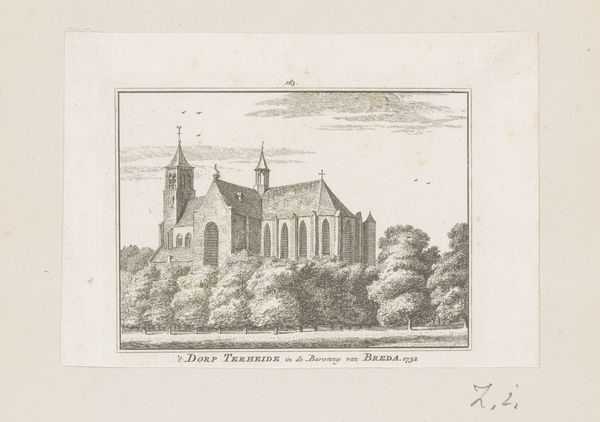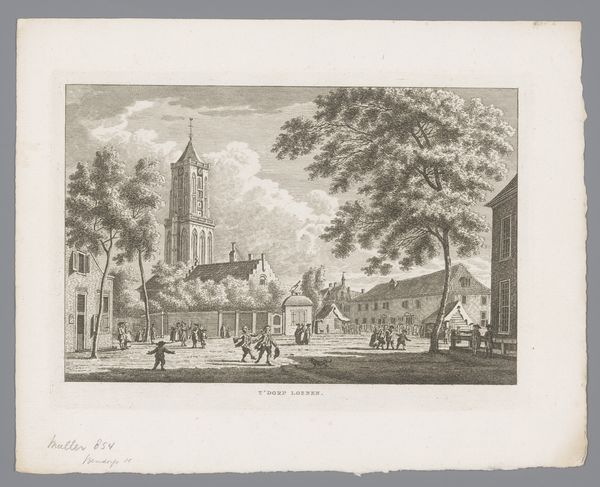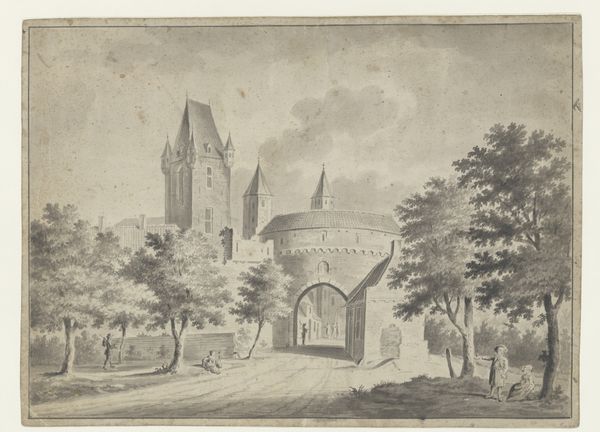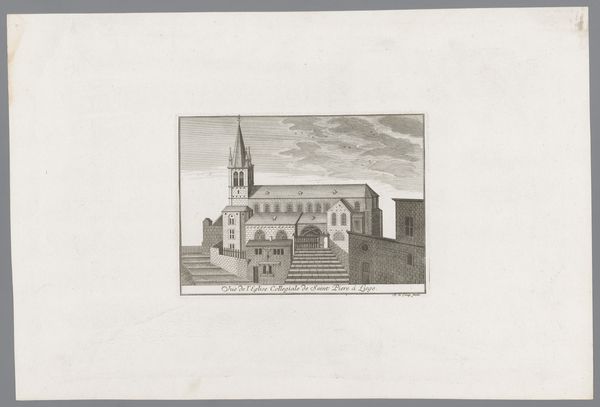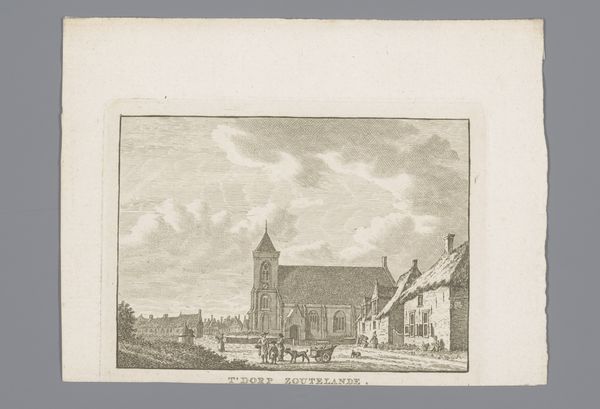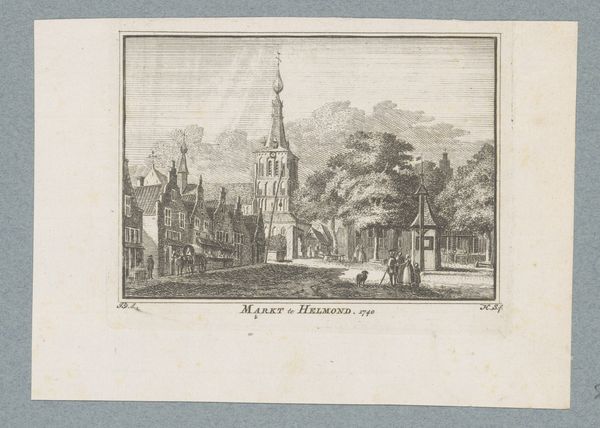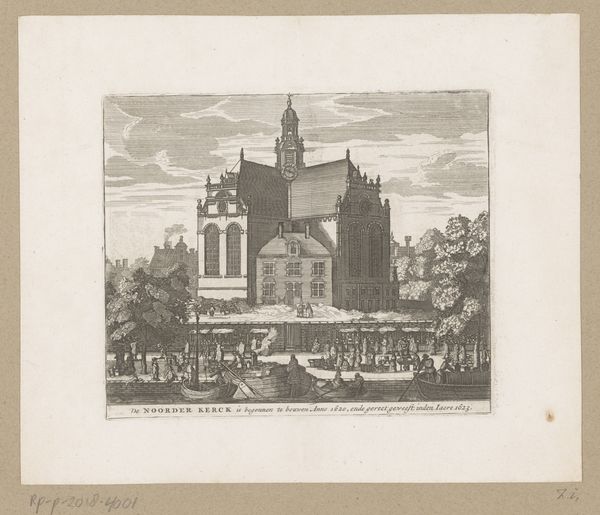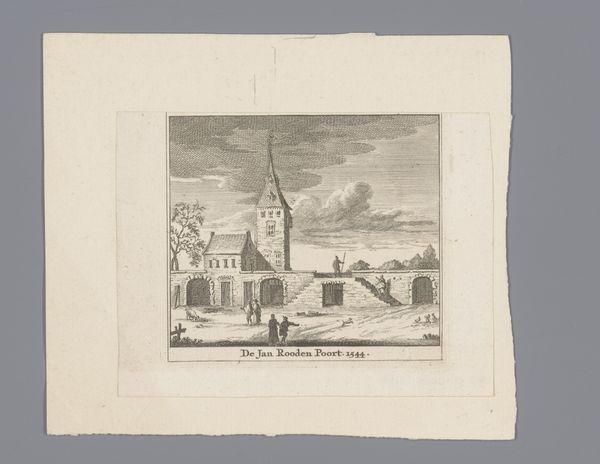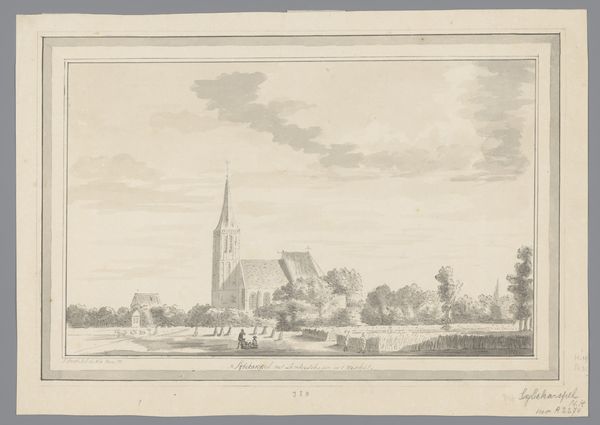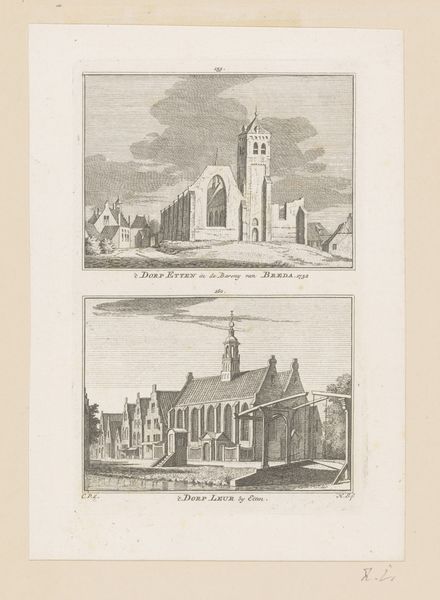
print, engraving
#
baroque
# print
#
landscape
#
cityscape
#
engraving
Dimensions: height 168 mm, width 203 mm
Copyright: Rijks Museum: Open Domain
Hendrik de Leth’s etching offers a meticulously rendered view of the church in Beverwijk, a town in the Netherlands. This seemingly straightforward depiction invites us to consider the public role of art in the 18th-century Dutch Republic. De Leth’s print, with its precise lines and attention to architectural detail, served not only as a visual record but also as a form of civic representation. The church, a dominant structure in the town, symbolizes the community’s values and social cohesion. Made during a time of relative peace and economic prosperity, the print reflects the cultural pride and identity of the Dutch middle class. Prints like these circulated widely, fostering a sense of shared identity and civic engagement. Examining archival materials, such as local histories, maps, and town records, helps us to understand the print's historical context. Art, therefore, becomes a window into the social and institutional life of its time.
Comments
No comments
Be the first to comment and join the conversation on the ultimate creative platform.

